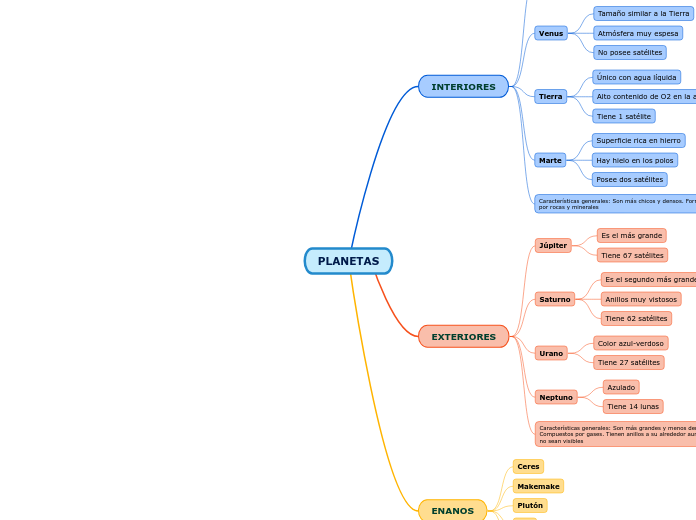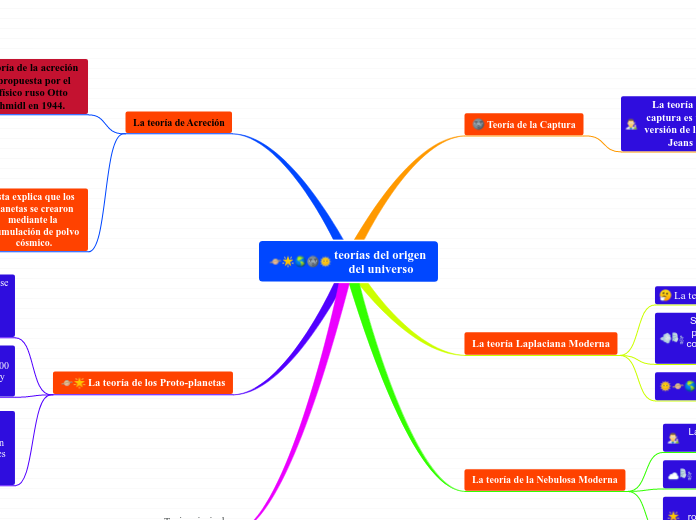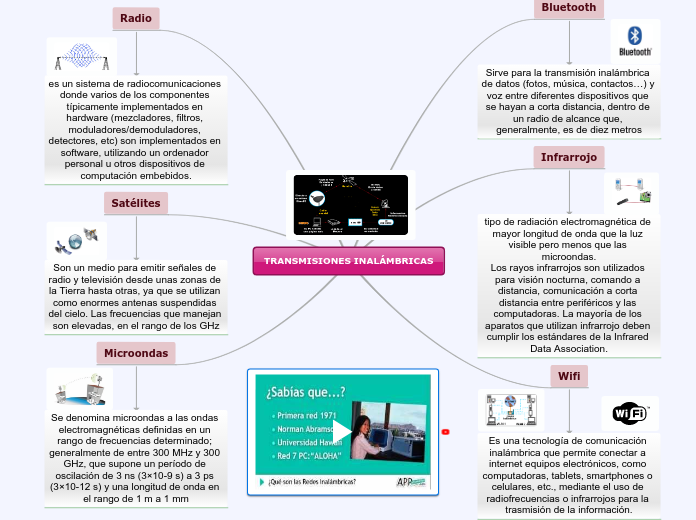PLANETAS
In physics, energy is the quantitative property that must be transferred to an object in order to perform work on, or to heat, the object. Energy is a conserved quantity; the law of conservation of energy states that energy can be converted in form, but not created or destroyed
ENANOS
Características generales: Rocosos, de tamaño pequeño y cuyas órbitas se cruzan con las de los otros cuerpos del Sistema Solar.
Eris
Plutón
Makemake
Ceres
EXTERIORES
There are many different types of energy, which all fall into two primary forms – kinetic and potential.
Energy can transform from one type to another, but it can never be destroyed or created.
Características generales: Son más grandes y menos densos. Compuestos por gases. Tienen anillos a su alrededor aunque no sean visibles
Neptuno
Chemical energy is stored in the bonds of atoms and molecules.
It is the energy that holds these particles together.
Stored chemical energy is found in food, natural gas, etc.
Give more examples.
Tiene 14 lunas
Azulado
Urano
Nuclear energy is stored in the nucleus of atoms.
This energy is released when the nuclei are combined (fusion) or split apart (fission).
Nuclear power plants split the nuclei of uranium atoms to produce electricity.
What element do they use to fuel nuclear power plants?
Tiene 27 satélites
Color azul-verdoso
Saturno
Thermal energy is created from the vibration of atoms and molecules within substances. The faster they move, the more energy they possess and the hotter they become. Thermal energy is also called heat energy.
Give examples of heat energy.
Tiene 62 satélites
Anillos muy vistosos
Es el segundo más grande
Júpiter
Motion energy or mechanical energy is the energy stored in objects; as objects move faster, more energy is stored.
Examples of motion energy include wind, a flowing river, etc.
Give more examples.
Tiene 67 satélites
Es el más grande
INTERIORES
Energy storage is the capture of energy produced at one time for use at a later time. A device that stores energy is generally called an accumulator or battery.
Características generales: Son más chicos y densos. Formados por rocas y minerales
Marte
Posee dos satélites
Hay hielo en los polos
Superficie rica en hierro
Tierra
Thermal energy storage is achieved with widely differing technologies.
Depending on the specific technology, it allows excess thermal energy to be stored and used hours, days, months later, at scales ranging from the individual process, to building or town.
What are 3 types of thermal energy?
Tiene 1 satélite
Alto contenido de O2 en la atmósfera
Único con agua líquida
Venus
The battery acquires its charged condition either by recharging or in the manufacturing of the unit.
During discharge, the chemical on the anode releases electrons, and ions in the electrolyte undergo an oxidation reaction.
Name the particular compounds in which energy is stored:
No posee satélites
Atmósfera muy espesa
Tamaño similar a la Tierra
Mercurio
Flywheel energy storage (FES) works by accelerating a rotor to a very high speed and maintaining the energy in the system as rotational energy.
Write down the main components of a typical flywheel.
No posee satélites ni atmósfera
es el más chico









